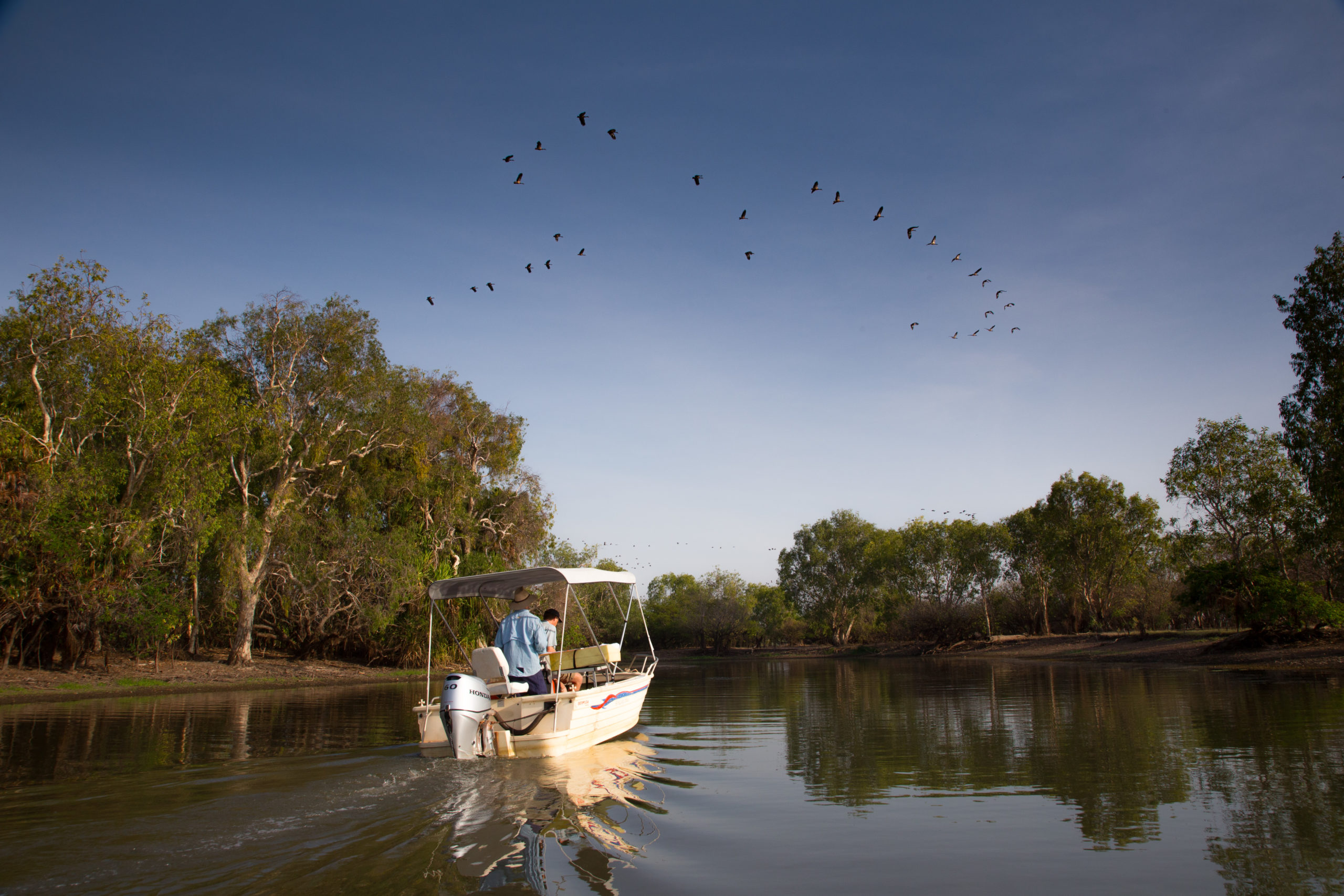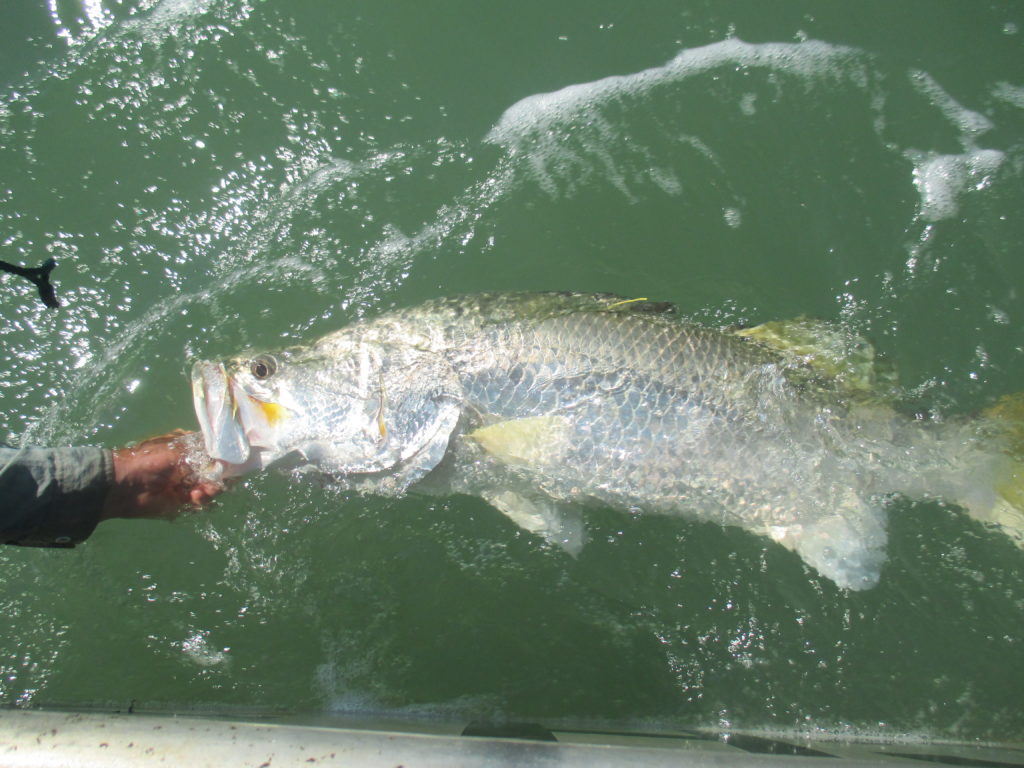29 January 2020
As the wet season rains inundate the Top End’s floodplains, fish begin to leave the refuge of their dry-season waterholes to capitalise on the abundance of new aquatic habitat.
Yet, until now, the movements of individual fish have been poorly understood. Hub researchers – led by Associate Professor David Crook of Charles Darwin University, including scientists from the NT Department of Primary Industry and Resources, Fisheries Division and with support from Parks Australia – surgically implanted radio transmitters into 25 barramundi and 29 fork-tail catfish, and tracked their movements over an eight-month flood cycle in Kakadu’s South Alligator River.

They found that individual barramundi and fork-tail catfish can move long distances – in some cases more than 25 km – from their dry-season waterhole. The majority of fish that survived the wet season sought out and recolonised their ‘home’ billabong, rather than just stopping at the first patch of suitable habitat they encountered. Understanding the behaviour and fates of individual fish will help scientists better understand food webs and energy flows in these dynamic river systems as environmental conditions change.

This research, recently published in the Journal of Animal Ecology, was part of a larger project led by Professor Stuart Bunn of Griffith University under the NERP Northern Hub. The current NESP Northern Hub is continuing work on environmental flows and rivers and waterholes.
Want to know more about the Resilient Landscapes Hub's activities and our research into practical solutions to environmental problems? Stay informed about activities, research, publications, events and more through the Hub newsletter.
"*" indicates required fields